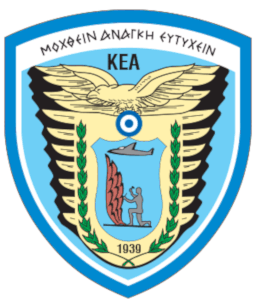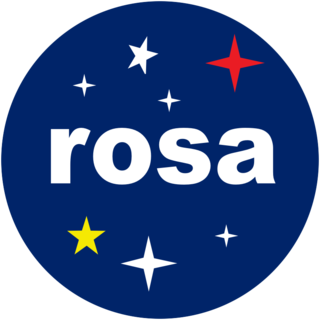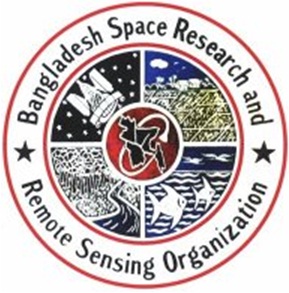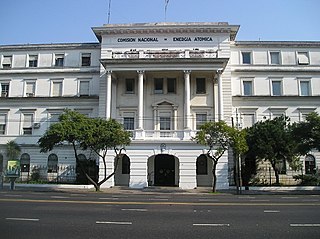
An unmanned aerial vehicle (UAV), commonly known as a drone, is an aircraft without any human pilot, crew, or passengers on board. UAVs were originally developed through the twentieth century for military missions too "dull, dirty or dangerous" for humans, and by the twenty-first, they had become essential assets to most militaries. As control technologies improved and costs fell, their use expanded to many non-military applications. These include aerial photography, precision agriculture, forest fire monitoring, river monitoring, environmental monitoring, policing and surveillance, infrastructure inspections, smuggling, product deliveries, entertainment, and drone racing.

The National Centre for Space Studies is the French national space agency headquartered in central Paris and it comes under the supervision of the French Ministries of Defence and Research.

The Korea Aerospace Research Institute (KARI), established in 1989, is the aeronautics and space agency of South Korea. Its main laboratories are located in Daejeon, in the Daedeok Science Town. KARI's vision is to continue building upon indigenous launch capabilities, strengthen national safety and public service, industrialize satellite information and applications technology, explore the Moon, and develop environmentally-friendly and highly-efficient cutting-edge aircraft and core aerospace technology. Current projects include the KSLV-2 launcher. Past projects include the 1999 Arirang-1 satellite. The agency was founded in 1989. Prior to South Korea's entry into the Institute for Advanced Engineering (IAE) in 1992, it focused primarily on aerospace technology.

The National Institute for Aerospace Technology "Esteban Terradas" is an autonomous agency of the Spanish public administration dependent on the Secretariat of State for Defence (SEDEF). It is responsible for the aerospace, aeronautics, hydrodynamics, and defense and security technologies research.
Qinetiq Mercator 1 is a joint British/Belgian remote sensing system utilising a modified version of the Qinetiq Zephyr High Altitude Long Endurance (HALE) unmanned aerial vehicle (UAV) as a platform.

Comisión Nacional de Actividades Espaciales is the civilian agency of the government of Argentina in charge of the national space programme.

The State Aircraft Factory of Greece, official name Hellenic Air Force Aircraft Depot, usually known through the acronym KEA, originally founded as EAF, is the oldest and most historic Greek aircraft manufacturer. It is a military unit subordinate to the Hellenic Air Force Support Command (HAFSC) and since 2012 it is located at Elefsis Air Base.
The Flemish institute for technological research, is an independent Flemish research organisation that provides scientific advice and technological innovations that facilitate the transition to a sustainable society, and this in the areas of energy, chemistry, materials, health and land use.
The Agency for Innovation by Science and Technology was a Flemish agency between 1991 and 2015. It was an externally autonomized agency of the Flemish Government, in charge of innovation policy in Flanders and located in the Ellipse-Building in Brussels.

The Romanian Space Agency is a public institution with extra-budgetary funding that coordinates Romania's national space technology research programs and space research-related activities. ROSA was founded in 1991 and is subordinate to the Ministry of Education.

The Bangladesh Space Research and Remote Sensing Organization বাংলাদেশ মহাকাশ গবেষণা ও দূর অনুধাবন প্রতিষ্ঠান, romanised: Bangladesh mohakash gobeshona o door onudhabon protishthan), or SPARRSO, is a state agency concerned with astronomical research and the application of space technology in Bangladesh. SPARRSO works closely with JAXA, NASA and the ESA in environmental and meteorological research. Using Japanese and American satellites, SPARRSO monitors agro-climatic conditions and water resources in Bangladesh.
The Flemish Council for Science and Innovation, previously known as the Flemish Council for Science Policy is the advisory body of the Flemish Government and the Flemish Parliament for science and technology policy. The VRWB provides advice concerning science and technology policy on its own initiative or on request. It provides recommendations, conducts investigations and provides its opinion on science and technology for Flanders. Dirk Boogmans is the Chairman of the Flemish Council for Science and Innovation. In 2016, it was abolished and reformed as the Flemish Advisory Council for Innovation and Entrepreneurialism.

The most important aspects of science and technology in Argentina are concerned with medicine, nuclear physics, biotechnology, nanotechnology, space and rocket technology and several fields related to the country's main economic activities. According to the World Bank, Argentine exports in high-technology are products with high R&D intensity, such as in aerospace, computers, pharmaceuticals, scientific instruments, and electrical machinery. Benefiting from Latin America's highest literacy rates since shortly after President Domingo Faustino Sarmiento made primary education universally available in the 1860s and 1870s, Argentine researchers and professionals at home and abroad continue to enjoy a high standing in their fields. Argentine Bernardo Houssay was the first Latin American awarded with a Nobel Prize in sciences. Educated in a National University, Houssay went on to establish Argentina's National Research Council, a centerpiece in Argentine scientific and technological development, fifty years on. Many other Argentines have contributed to scientific development around the world, though sometimes having to emigrate to do so. Probably for that, the Argentine education is referred as the Latin American docta, which originates from the Latin docta (learned). Argentina was ranked 73rd in the Global Innovation Index in 2021.
The European Union Space Programme is an EU funding programme established in 2021 along with its managing agency, the European Union Agency for the Space Programme, in order to implement the pre-existing European Space Policy established on 22 May 2007 when a joint and concomitant meeting at the ministerial level of the Council of the European Union and the Council of the European Space Agency, known collectively as the European Space Council, adopted a Resolution on the European Space Policy. The policy had been jointly drafted by the European Commission and the Director General of the European Space Agency. This was the first common political framework for space activities established by the European Union (EU).

The Harwell Science and Innovation Campus is a 700-acre science and technology campus in Oxfordshire, England. Over 6,000 people work there in over 240 public and private sector organisations, working across sectors including Space, Clean Energy, Life Sciences and Quantum Computing.

Specim, Spectral Imaging Ltd is a European technology firm headquartered in Oulu, Finland. Specim manufactures and sells imaging spectrographs, hyperspectral cameras and systems. Specim's airborne AISA hyperspectral cameras have been utilized for example in monitoring the environmental effects of major industrial catastrophes such as Deepwater Horizon oil spill and Red mud spill.
The Large Observatory for X-ray Timing (LOFT) is a proposed ESA space mission originally slated to launch around 2022, and now proposed to launch around 2025. The mission will be devoted to the study of neutron stars, black holes and other compact objects by means of their very rapid X-ray variability. LOFT is supported by a large international collaboration, led by researchers spread over most of the European countries, including Italy, Switzerland, Germany, Denmark, United Kingdom, Greece, Ireland, the Netherlands, Poland, Czech Republic, Spain, and with contributions from Brazil, Canada, Israel, United States and Turkey. SRON Netherlands Institute for Space Research acts as principal investigator.

Sentinel-5 Precursor (Sentinel-5P) is an Earth observation satellite developed by ESA as part of the Copernicus Programme to close the gap in continuity of observations between Envisat and Sentinel-5.

ALTIUS is a satellite mission proposed by the Belgian Institute for Space Aeronomy and currently under development by the European Space Agency. Its main objective is to monitor the distribution and evolution of stratospheric ozone in the Earth's atmosphere. The industrial consortium is led by QinetiQ Space, acting as mission prime. The satellite design is based on the PROBA small satellite bus. The payload, developed by OIP Sensor Systems, is an innovative UV, visible and NIR instrument.
According to the UK Space Agency, there are 173 space companies currently operating in Scotland as of May 2021. These include spacecraft manufacturers, launch providers, downstream data analyzers, and research organisations.












